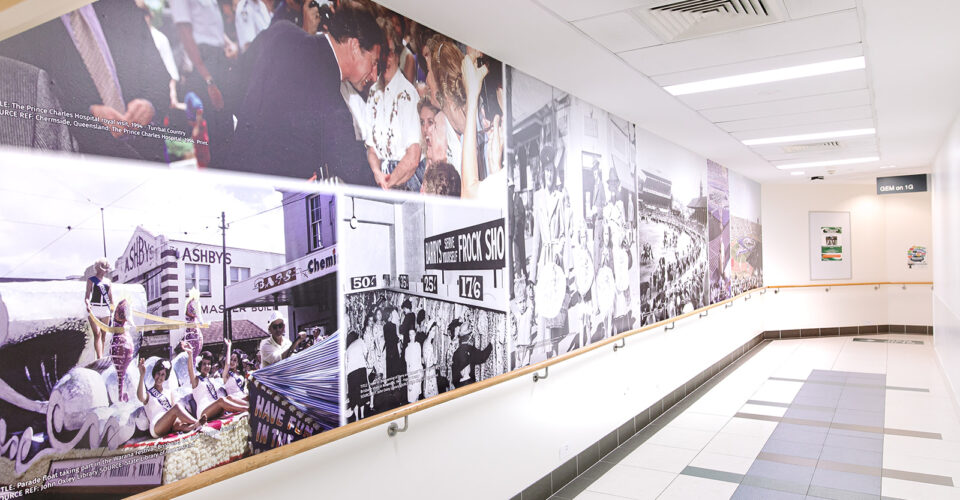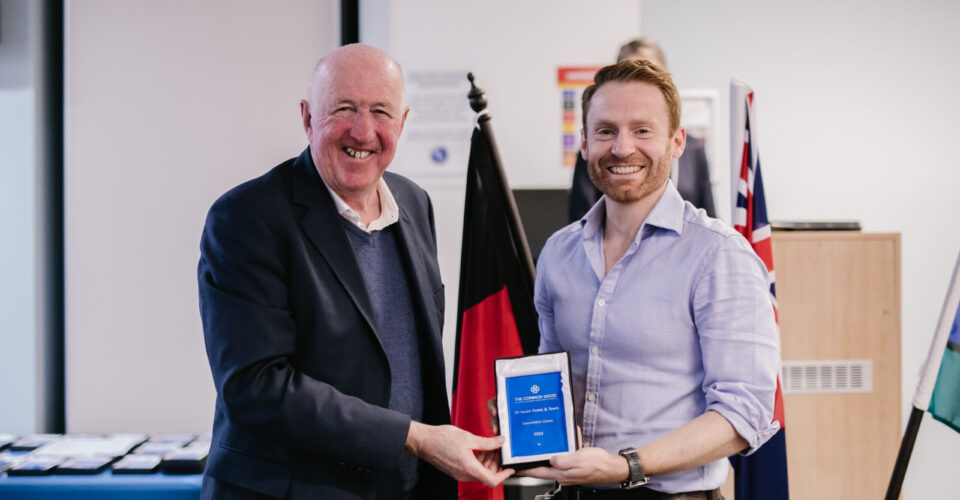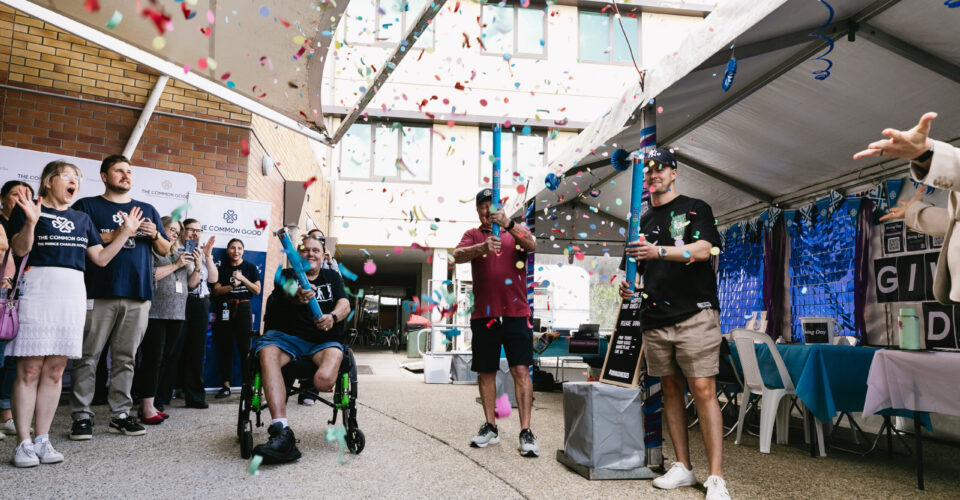“We all have a role to play in a patient’s recovery. Memory Lane is a great way to enhance this recovery process and is also evidence-based. Best of all, the patients really love it,” said Senior Occupational Therapist Karen Fichtenmayer.
According to the Australian Institute of Health and Welfare, there were about 27,800 hospitalisations in Australia due to dementia in 2023–24, with an average length of stay of 15 days. Evidence shows that older people can lose a significant amount of muscle in just a few days by lying in bed. This hospital-associated deconditioning puts them at higher risk of functional decline, which affects walking ability and independence.
Clinicians at The Prince Charles Hospital (TPCH) were motivated to enhance patient outcomes, and the concept of Memory Lane was introduced. At the end of 2023, this hospital corridor connecting the Early Assessment Medical Unit (EMU), 1F, and 1G/Geriatric Evaluation & Management (GEM) Wards, where older adults are cared for – many of whom have some form of cognitive decline or delirium – was transformed into a meaningful space that supports patients’ functional, emotional, physiological, and behavioural well-being. The hallway, inspired by a similar memory corridor in the UK and funded through The Prince Charles Hospital Foundation’s 2022 Giving Day, is adorned with images from yesteryear, carefully selected to showcase the rich history of Brisbane, particularly the area around TPCH.
In 2024, the hospital’s Occupational Therapy department enlisted the help of some fourth-year UQ students to complete a joint project aimed at promoting the new service and gathering feedback on its usage from clinicians, patients, and staff. A comprehensive literature review was conducted and a survey completed with patients, family members and staff about their awareness and use of Memory Lane. Staff were additionally asked about how confident they felt using Memory Lane with their patients.
“The literature review examined various aspects but focused mainly on non-pharmacological interventions similar to Memory Lane, which utilise reminiscence therapy. These approaches can stimulate memory, increase social engagement, reduce feelings of loneliness, support mental health, and promote functional and cognitive rehabilitation,” said Occupational Therapist Lisa von Berky.

Despite the benefits showcased in the literature review, the survey results revealed a definite need to further promote the service, highlight the evidence base and reinforce the value of Memory Lane use to enhance patient recovery.
“We’re committed to ensuring Memory Lane is used to its full therapeutic potential. Our thought was that if we create resources, including a brochure, poster, and tip sheet, to promote Memory Lane, people can see the evidence behind it and understand how it can really benefit their family members. The tip sheet is a support, so families or carers feel comfortable liaising with nursing staff and confident getting their family members engaging with the service,” said Senior Occupational Therapist, Karen Fichtenmayer.
Phase Two of this project will involve evaluating the promotional resources created during Phase One and developing a video about Memory Lane and its benefits, to be played on Queensland Health patient televisions and iPads.
“As the Memory Lane project evolves, it holds the promise not only of better outcomes—but also of enhancing dignity and joy with every patient’s journey,” said Karen.








